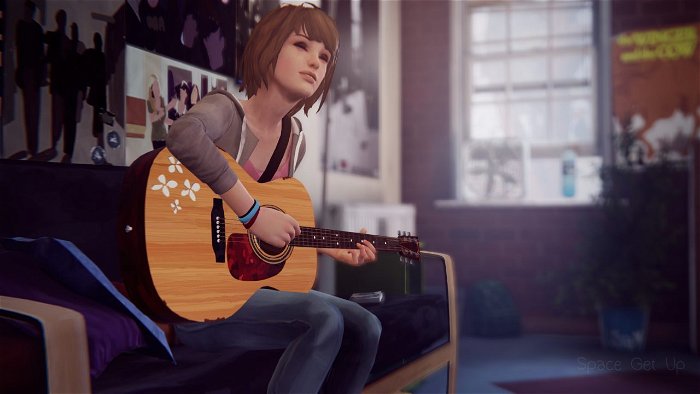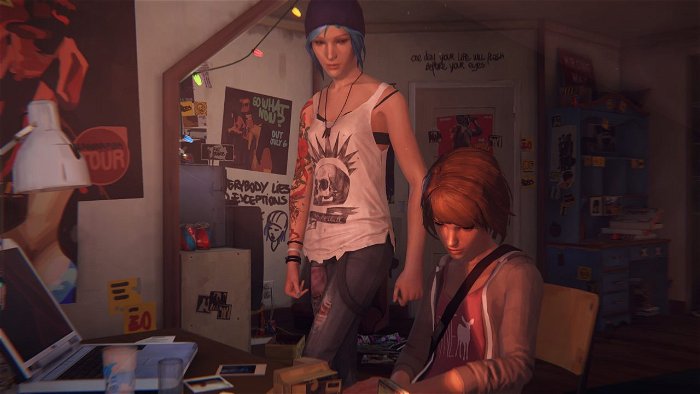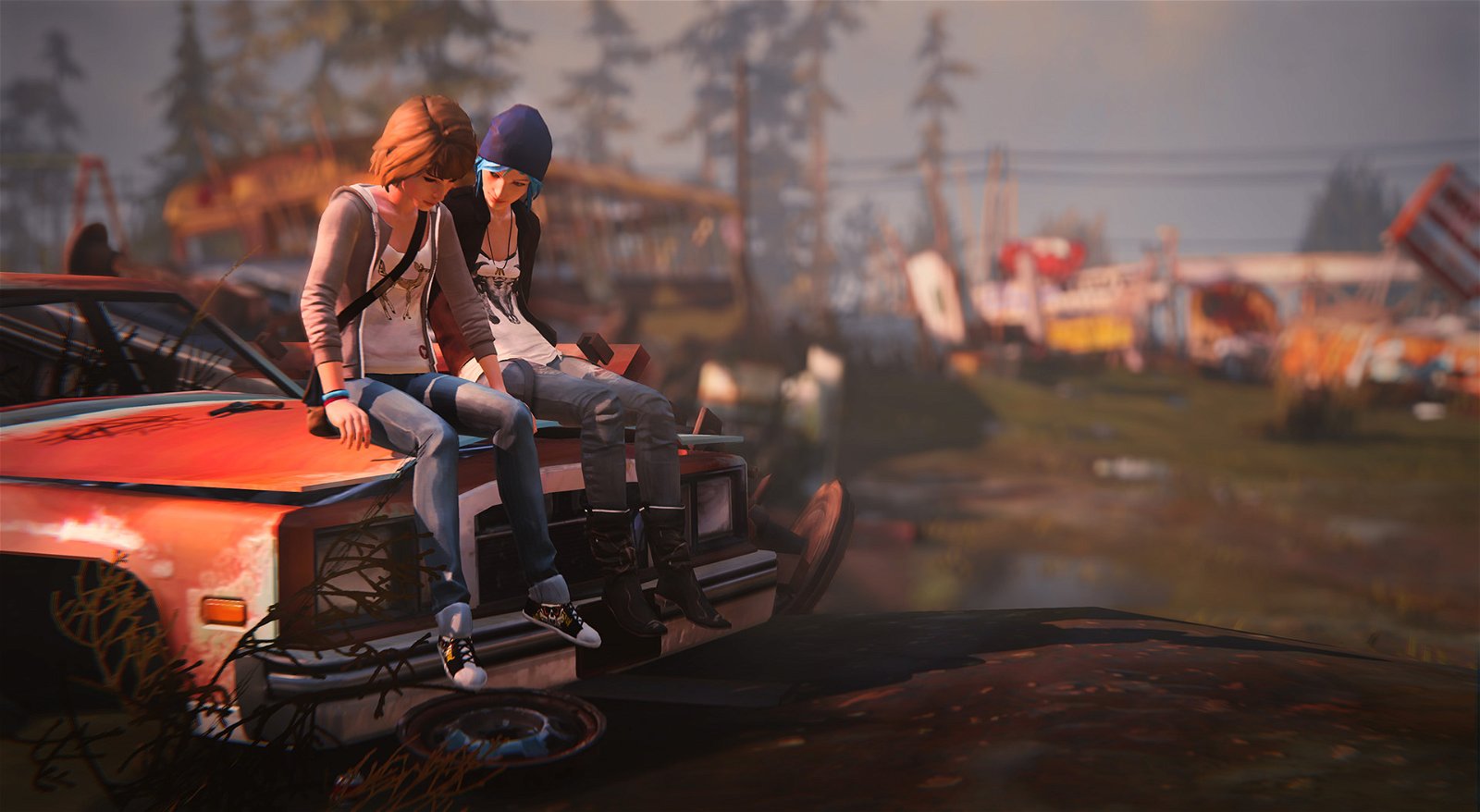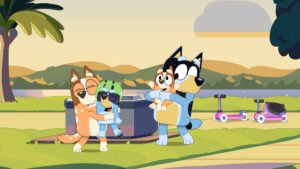On July 28th, Dontnod released the fourth installment of their teen drama, graphic adventure Life is Strange.
For those who haven’t had a chance to play this rich, nostalgic game, the story centres around Maxine Caulfield, an unconfident budding photographer as she struggles through her life as a high school student in Oregon, trying to find her place in life. Throughout the game so far, players have discovered that life as a teenager can be difficult, as Max is forced to live through some harsh, violent situations and make choices that will have lasting consequences. With the aid of the supernatural ability to reverse time, Max explores a multitude of turbulent situations both in the past and present day.
Life is Strange touches on themes of bullying, regret, friendship and family—some very intense issues for a high school student. After the release of the first three episodes, it is obvious that the strong community that has come together through this game identifies deeply with the characters and their situations. CG Magazine had an opportunity to meet with Co-Game Directors Michel Koch (also the Art Director), and Raoul Barbet of Dontnod to discuss the deeper ideas behind this riveting adventure.

CGM: Life is Strange deals with some very heavy issues. Did you want to use this as a platform to help people explore and relate to these issues in their own life?
Raoul Barbet: When we started to work on the game, we knew we wanted a game to work on a slower pace; much more centered on characters and intimate moments and human behaviour like friendship. We wanted some scenes that could show family issues, violence. We really wanted to use scenes that most of the players could relate to because we were dealing with domestic violence at one point of the game, and there are some of us who have experienced that or we know someone who has experienced that. That’s what we are doing in Life is Strange. It’s that we are trying to deal with these issues in a very sensitive way, I think. Dealing with those themes that are not always dealt with in videogames, that is what we wanted to bring to an interactive video game.
CGM: So your goal to create empathy within the player.
Michel Koch: Yeah, and this is the kind of theme you can see within the independent scene of gaming. We love to play independent games and we can see that you are more allowed to talk about those difficult themes. We received a lot of mail and fan art from the players telling us that they feel a little less alone when they play this game because they can see that they are not the only ones who are having those problems. This is what we wanted to do: just talk about those problems and also having fun playing those characters, but inside this realistic environment with those problems because it’s rare. There are those problems when you are in high school, and it is difficult. People can be harsh and violent, so we really wanted to show that it’s not just fun to be a teenager. It’s difficult to have to make some choices and to have to live with them.
Raoul Barbet: Of course there’s a balance between these darker scenes and the lighter scenes. One of the main themes is also friendship. We have this strong friendship between the main character Max and her best friend Chloe. There also many light-hearted scenes where you have those characters reconnecting together and just being friends, and going outside and being teenagers and having fun. So we have this balance between these lighter themes and darker themes and we wanted this to feel real. I think that is why the game is called Life is Strange: because we’re really—even if there is this supernatural power to rewind—telling the characters’ story, and it’s something we want is to really be close to reality and to reflect reality.

CGM: You mentioned that you get a lot of fan mail responding to these themes. That must be very empowering to know that the fans of the series are taking your message to heart like that.
Raoul Barbet: Yes. We are really happy and overwhelmed for that kind of fan reaction. We’ve been seeing a lot of fan art and cosplays and reading tweets from the fans that are really loving the game. When we can read them and hear how it helps them—even in a small way—it is very important to us. It means that we have succeeded in talking about certain themes in a good way. It’s not always easy because when you are dealing with these kind of themes, you have to be very careful with how you approach them.
Michel Koch: And it’s not about telling a message. We have this story with these characters that we think are realistic. You can relate to them, even if you are not a teenager because we are also making the game for people like us. So as an adult, you can think of yourself in your childhood and think about how you would deal with these problems at that time. We always think about how, by making different choices in our lives, how our lives would be different. So this is kind of a really interesting thing to be feeling. You ask yourself about these kinds of problems that you cannot control in your life. So this is what we wanted to do.
Raoul Barbet: I think a lot of different players can relate themselves to this game, either because they’ve been these teenagers before or they know someone like them. I think we were not sure at first what kind of audience we wanted to reach. We made this game because we really wanted to make this game. What we are really happy to see is that the different kinds of players—young, teenage players, or female players, or older players like us, even hardcore gamers who are usually playing Call of Duty or first person shooters—they take the time to really play the game, and they enjoy it, so it’s really cool.
Michel Koch: And to see that the cooperative mode, you can play together with your girlfriend, or this is the kind of game you can play with all your friends. So it’s cool. And also having a whole family discussing about the game. A lot of developers come and say, “Ah, this is cool! I can talk with my children about a game.”

CGM: It’s interesting that you decided to release a game like this in episodes. What led to that choice?
Michel Koch: Right from the beginning, we really wanted to release the game as episodes. We wrote the story this way. We worked on the main story with a French TV writer, [Jean-Luc Cano] from the beginning. We wanted to have this way of telling the story where we can really have control over the purpose (reason?). With a shorter episode, you can play the game in 2-3 hours, so we know the player will most likely play each episode in one play session. We know when it starts and when it ends, and we can really tailor the story to have a reason for playing, because when you play a long game of 20 hours, you can just stop playing at any moment. Sometimes you can stop playing in a very sober moment, and that may not be the way the story or the director meant it to be cut.
Raoul Barbet: And the episodic format allows us to have this slow pacing in the game. It gives the player time to look at stuff, speak with the people, and really decide “oh, we want to play the game!” you can devote some time to doing so. For each episode, there are a lot of characters inside the game, so you have to learn about them and converse with them. We can control which character will appear in which scene and really create a narrative arc for each one based on each episode. For us, on the writing point of view, it’s really useful. You really have to focus on who will be in each narrative arc and decide where to begin them and close them. Yeah, it’s really interesting to work this way.
Michel Koch: And of course, like in TV shows, we can end an episode with a cliff-hanger. And the waiting, I think some players will say that it’s worth waiting for. We’re seeing that, in fact. It allows the player to think about the game, to speculate about the game, and reflect on what they did and what they felt as they were playing each episode. They have time to get together and talk about how it ended and what might be following. It also works for a build-up of the community because you’re also waiting together with other players for the next episode and talking about it. I think it’s a great way to release this kind of game.

Raoul Barbet: For a lot of players, it’s a pleasure to be a part of the community just waiting and making fan art. And for us as a team, it was amazing to see all the fan art and feedback, because it’s a long production; it’s difficult; we still have two episodes to finish. For us to see the communities that are out there, it gives us a lot of strength to continue.
Michel Koch: We really love to see that the community is really in love with the characters and are really happy with that aspect because that’s something we tried to do at least. Seeing that there is so much love for the characters is so important; it pushes us forward to finish the game. It’s hard and it’s a lot of work, and so seeing all that positive feedback is really a breath of fresh air to be sure that we push forward and make it to the end to produce it the best way possible. Please keep making the fan art!




